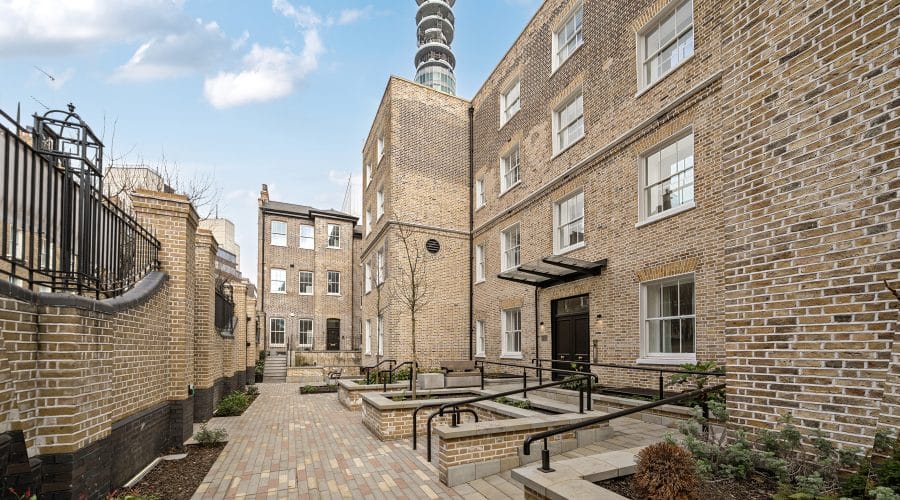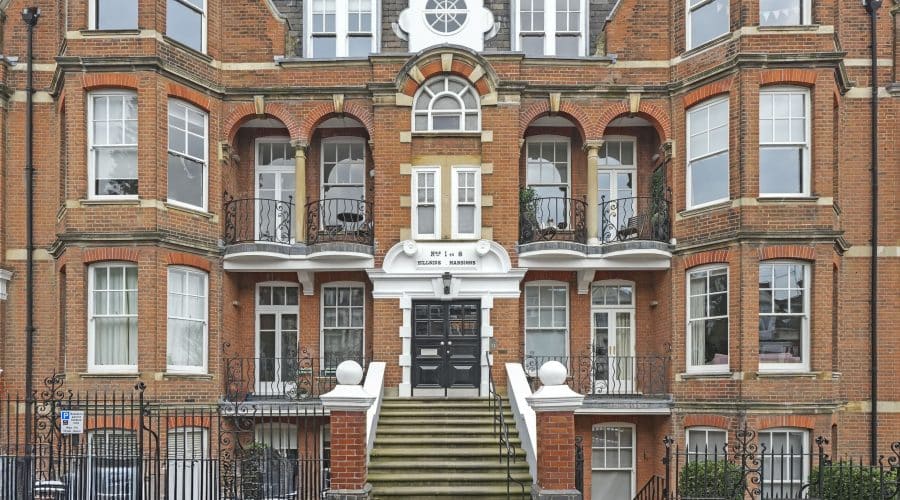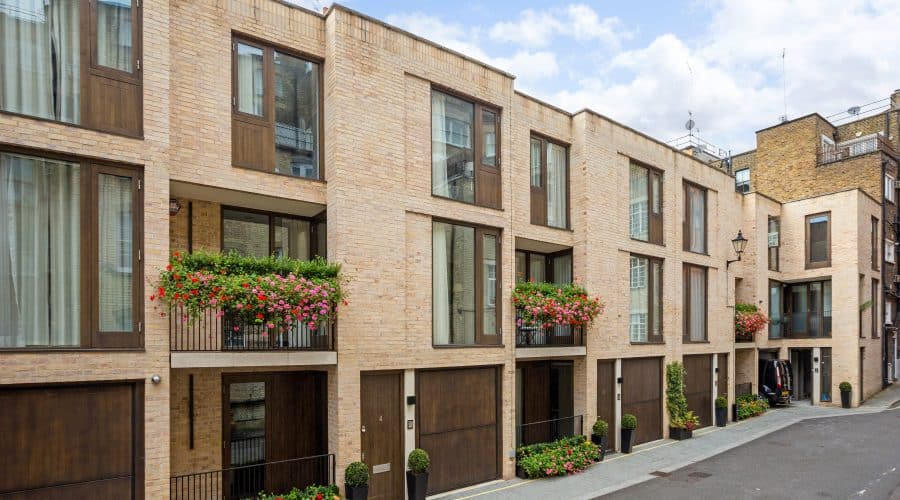Owning buy-to-let property can offer a range of benefits, including a passive income and the potential for capital growth. And for those with property in London’s prized ‘golden postcodes’, there’s also the added allure of status.
Yet, rising interest rates, slowing house price growth and significant regulatory reform are raising questions about whether UK buy-to-lets are still a profitable investment.
In our latest real estate-focused article, we look at the pressures facing many landlords, but also the opportunities that may be opening up.
The headlines are hard to avoid: ‘Is this the start of a great buy-to-let sell-off?’1 and ‘Lots of us are very anxious: why Britain’s buy-to-let landlords are selling’2.
On the face of it, some landlords are reconsidering their investments – they are more than twice as likely to be selling than buying, with a record-high 20% of landlords selling up in the last 12 months alone, according to the latest data from the National Residential Landlords Association3.
Many are mortgaged buy-to-let investors coming to the end of their mortgage deals – faced with the double whammy of soaring mortgage rates and the end of mortgage interest relief, which was phased out in 2020. It’s forcing some landlords to quit the market and sell up, despite property prices falling across the UK4.
“It’s probably the smaller landlords and those squeezed the most who are going to be making some difficult decisions,” says Lucian Cook, Head of Residential Research at Savills.
Market opportunities
And while landlords are no doubt feeling the pinch, this doesn’t tell the whole story. There are still opportunities out there – especially for those with capital available and less mortgage debt, who are well-positioned to take advantage of depressed valuations in the current market.
“Anyone looking to invest in buy-to-let must come into it with their eyes wide open,” says Stephen Moroukian, Head of Product and Proposition for Real Estate Financing at Barclays Private Bank.
“Seek professional advice, do your research, check your numbers and be aware of all the latest regulations. For instance, if you have the liquidity, is a straight-cash purchase necessarily the right option? And what about wealth planning, tax considerations and exchange rates? You need to make sure every outcome has been deliberated; but there’s no doubting the figures can still add up.”
And even if the financial benefits of buying a piece of prime UK real estate are not immediately apparent, there are other reasons why it may still be a worthwhile investment. You might be drawn to that stunning location, or you plan to use the property for a different purpose in the future, or you may just see it as a secure store of wealth given its long-term appreciation potential.
“Of course, landlords will consider using less leverage to generate enough margin to offset risks in the current market,” adds Moroukian. “But it’s worth remembering that historically real estate can also be a useful method of protecting portfolios from inflation, as well as offering important diversification benefits.”
London primed for growth?
High-net-worth individuals are often drawn to the prime central London property market for its resilience, strong fundamentals and global appeal. Property in the vibrant and cosmopolitan city is often seen as a safe-haven asset with strong investment potential – especially with a growing number of international buyers back in town.
And although Camilla Dell, Managing Partner of buying agent Black Brick, says prices are slightly below where they were a year ago, “the prime central London market is performing better than the rest of the UK”.
She adds: “We’ve taken a large volume of new enquiries from buyers in the Middle East and the US looking for homes and investments in the city. I believe there’ll be some excellent buying opportunities over the coming months, especially as sellers are now starting to be far more realistic with their pricing.”
Rents hit record highs
Despite some improvements to rental supply in the UK’s prime markets5, many areas remain chronically undersupplied – most notably the exclusive postcodes of London.
This has led to rents increasing at their fastest pace on record, according to the Office for National Statistics6 – giving landlords some extra wiggle room. Knight Frank is reporting that prime London rents are now more than 25% higher than they were at the start of the pandemic7. Savills is also forecasting prime London rents to rise by another 13.6% in the next five years8.
“The London rental market has seen some extraordinary growth in the last two-and-a-half years, with double-digit rental growth not uncommon9,” says David Mumby, Head of Prime Central London Lettings at Knight Frank. “And while things are starting to normalise, I still expect strong rental growth of around 5%-6% this year.
“The one- and two-bedroom flat markets in the prime London postcodes of Knightsbridge, Chelsea, Notting Hill and Kensington have been exceptionally strong – and I believe these areas also have room to grow in the long term.
“It’s worth noting, too, that prime central London (PCL) property prices remain 15% below their 2015 peak10, so while it’s a tough time right now, we are long overdue growth in PCL. If you can hang on to your property, there may be significant upside to come.”
Mumby adds: “If you’re not servicing a lot of debt and you’re looking at your buy-to-let investment as a long-term hold – say 10 years or more – then I believe there are significant opportunities out there.
“I have absolutely no doubt that we will look back at this period as the bottom of the price curve. And if you’re in for the ride, you’ll enjoy a decent yield along the way, too.”
Dell at Black Brick adds: “Buy-to-let is attractive for clients who are well organised and well financed. Clients who can structure their wealth efficiently, and only require more modest levels of financing are at a distinct advantage.”
Regulatory challenges
But it’s not just rental yields and potential capital growth to consider, many landlords have seen profits reduce significantly in recent times with changes to tax laws and an alphabet soup of new regulations to adhere toOne additional regulation that landlords no longer need to comply with is upgrading the energy efficiency of their rental properties. This was expected to cost £10,000 or more for an average property11, but the UK government recently revised plans to scrap the policy (instead encouraging landlords to do so when they can)12.
Then there’s the ever-increasing maintenance and repair costs to factor in, as well as the difficulty of finding good tenants. With the Renters’ Reform Bill currently weaving its way through parliament13, which will bring more protection for tenants, landlords will soon need a valid reason to evict tenants – for example, citing antisocial behaviour, unpaid rent or a need to sell the property.
“The rental sector is becoming more regulated, which can only be a good thing – for both tenants and landlords alike,” says Mumby at Knight Frank. “And while it inevitably means more costs and time-consuming compliance for landlords, it does force you to operate in a more professional manner, as well as taking more of a long-term view. You cannot just expect to make a profit in two, three or four years. The most successful investors view rental properties as an asset class to hold for at least 10 years.”
Cook at Savills concurs: “It’s the larger landlords, particularly those that hold their investments in a corporate structure, who are going to be better equipped to handle the ever-expanding regulatory challenges facing the buy-to-let market – because they’ve got economies of scale, and also economies of learning.
“For some smaller landlords, it’s going to reduce the flexibility they have on their assets. And some of these new regulations are going to be hard for them to stomach.
“It’s why I see the sector becoming weighted more towards the larger landlords, or those who are equity rich. They are also the ones who are going to be able to capitalise on rental growth prospects and perhaps sense opportunities to pick up stock that’s now coming back on to the market.”














